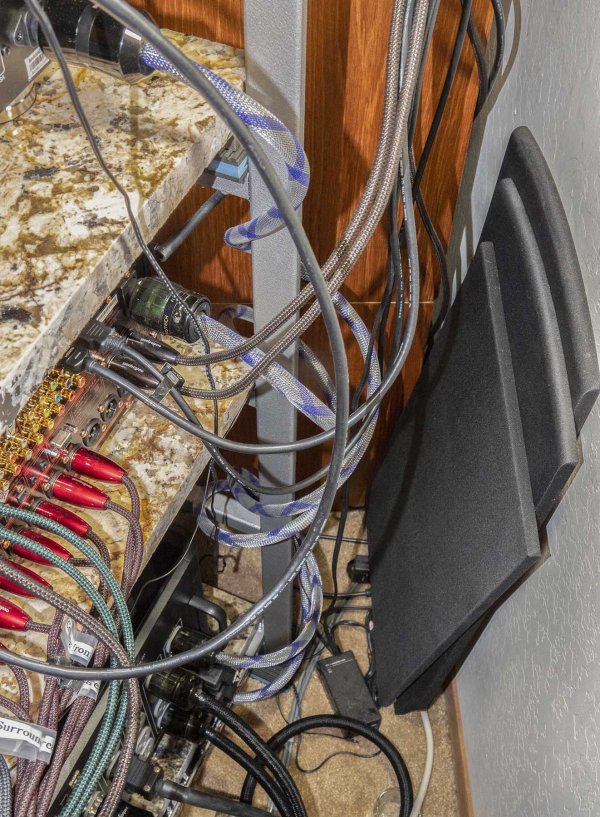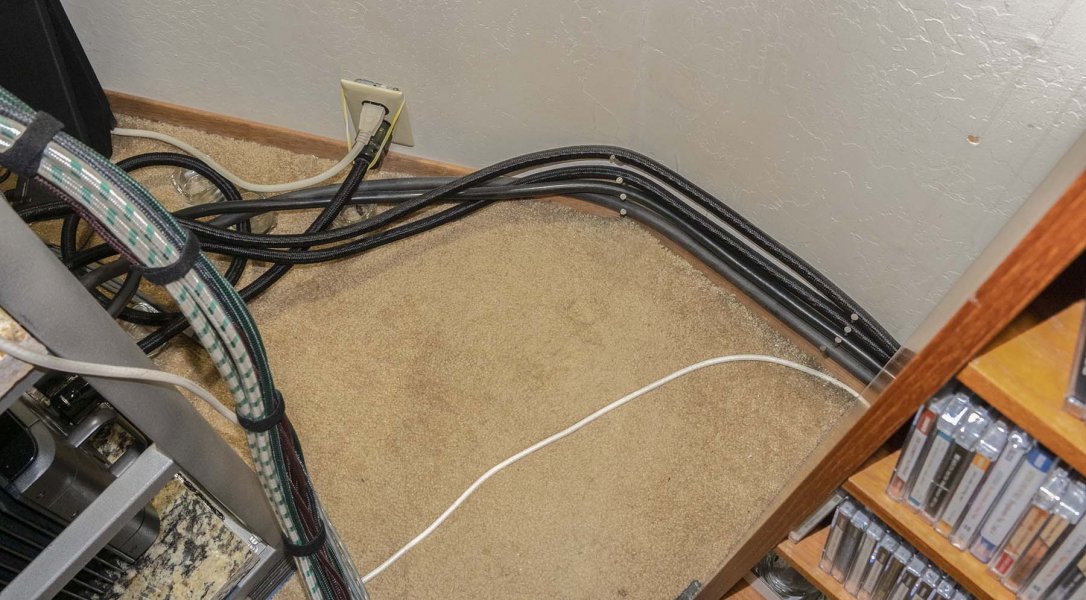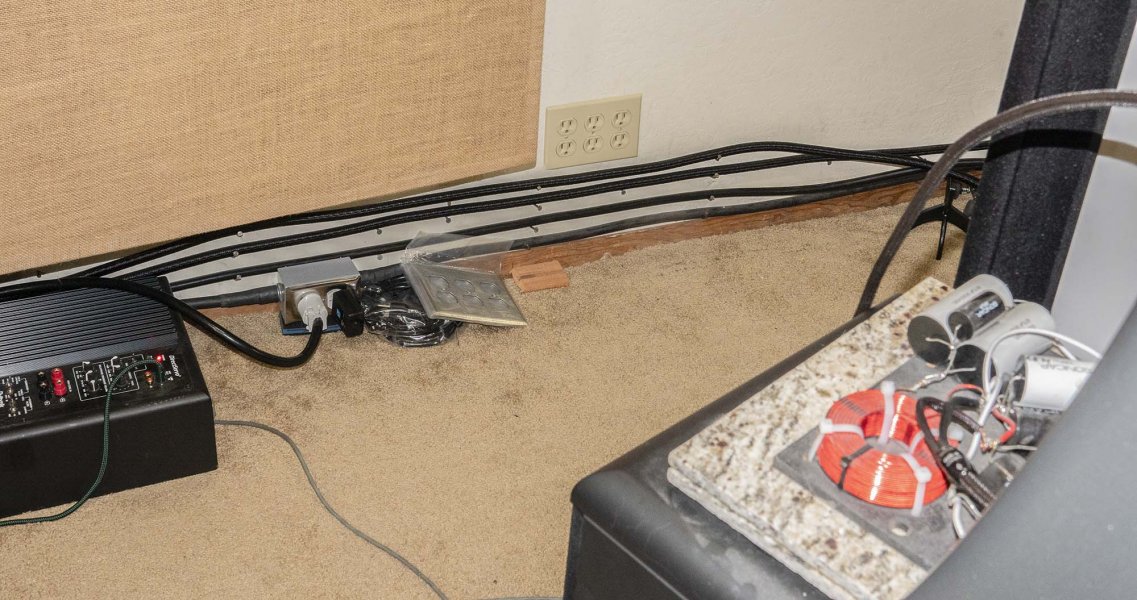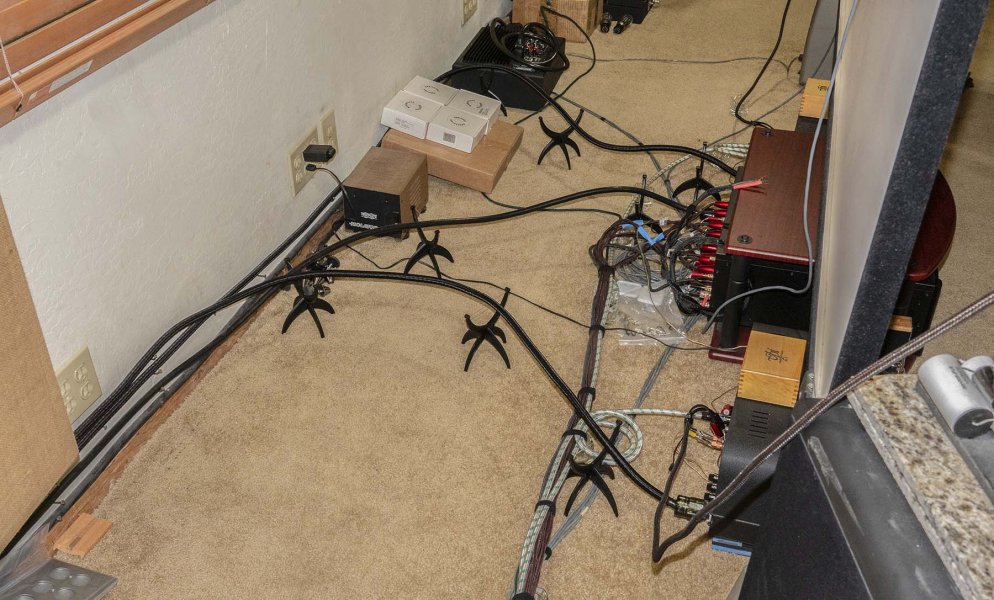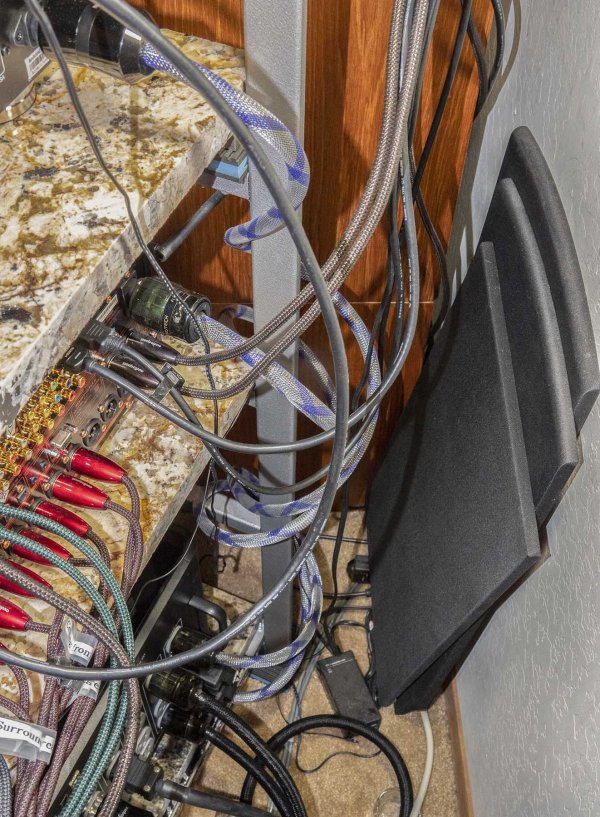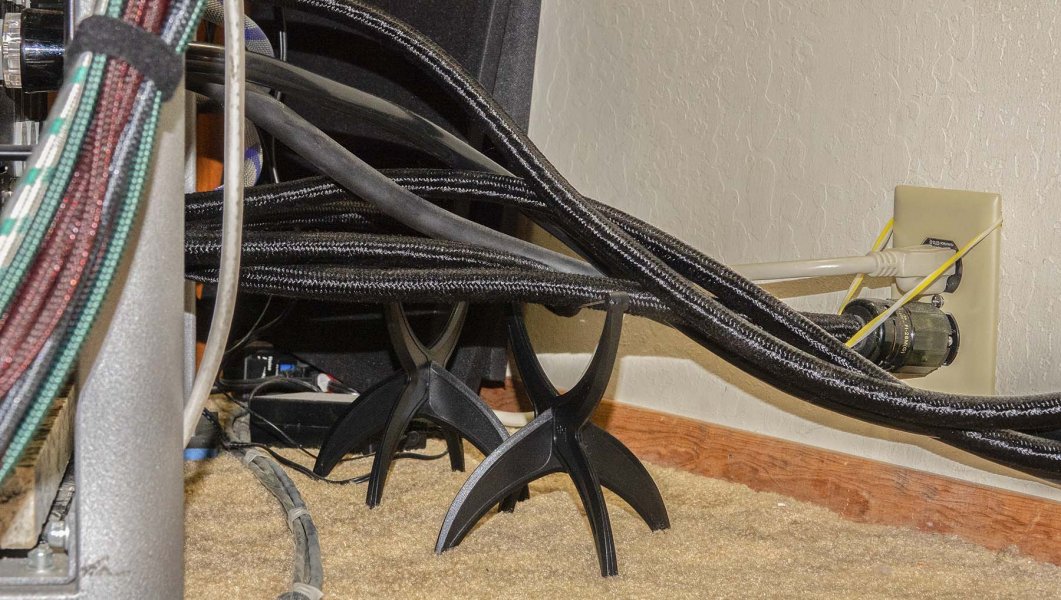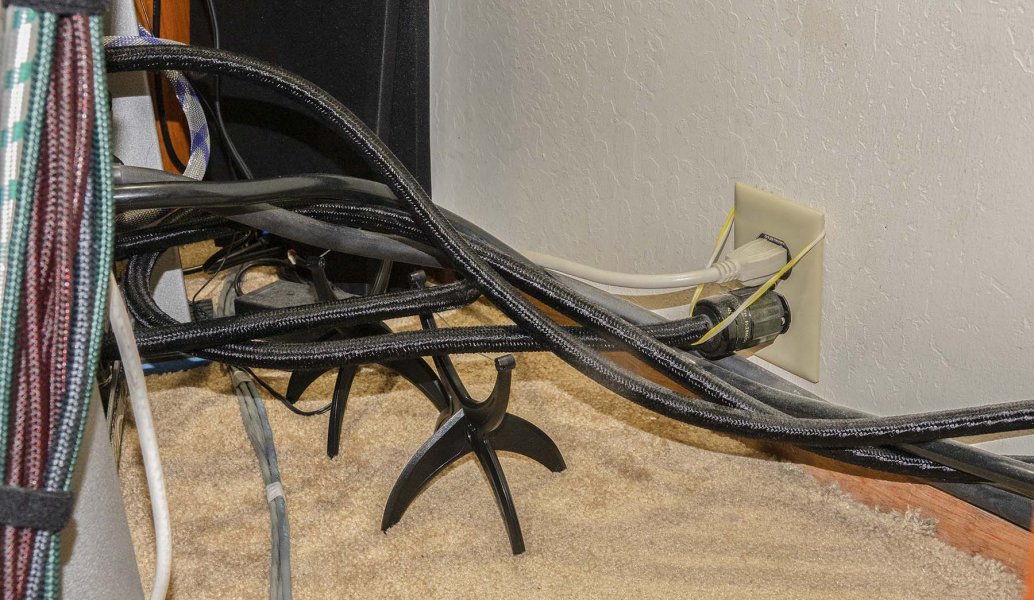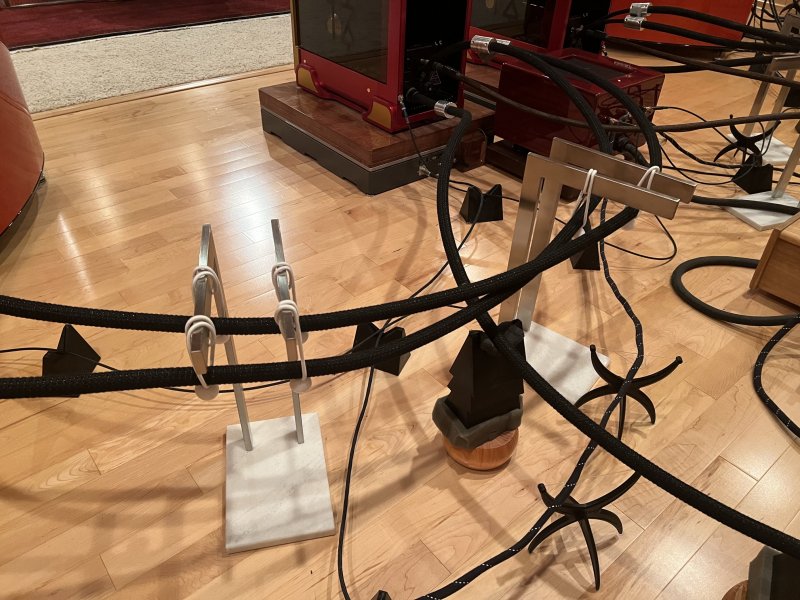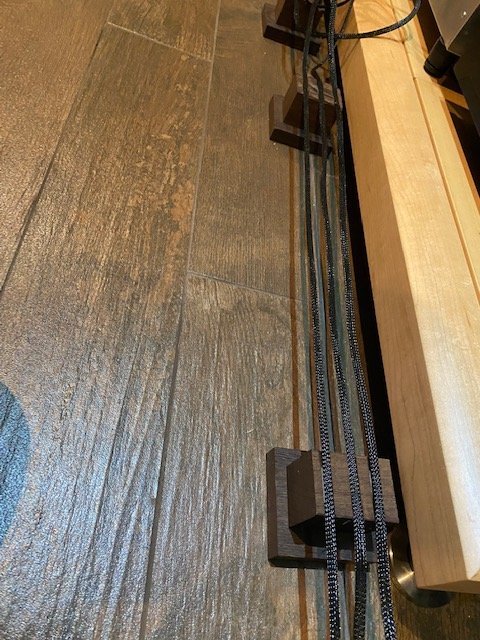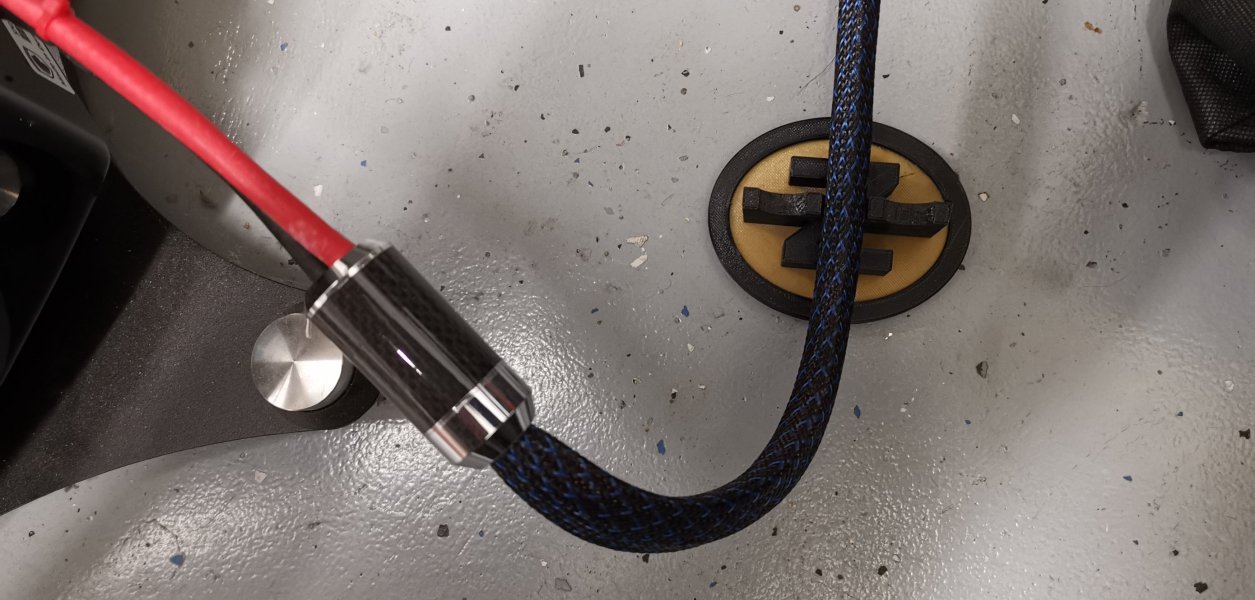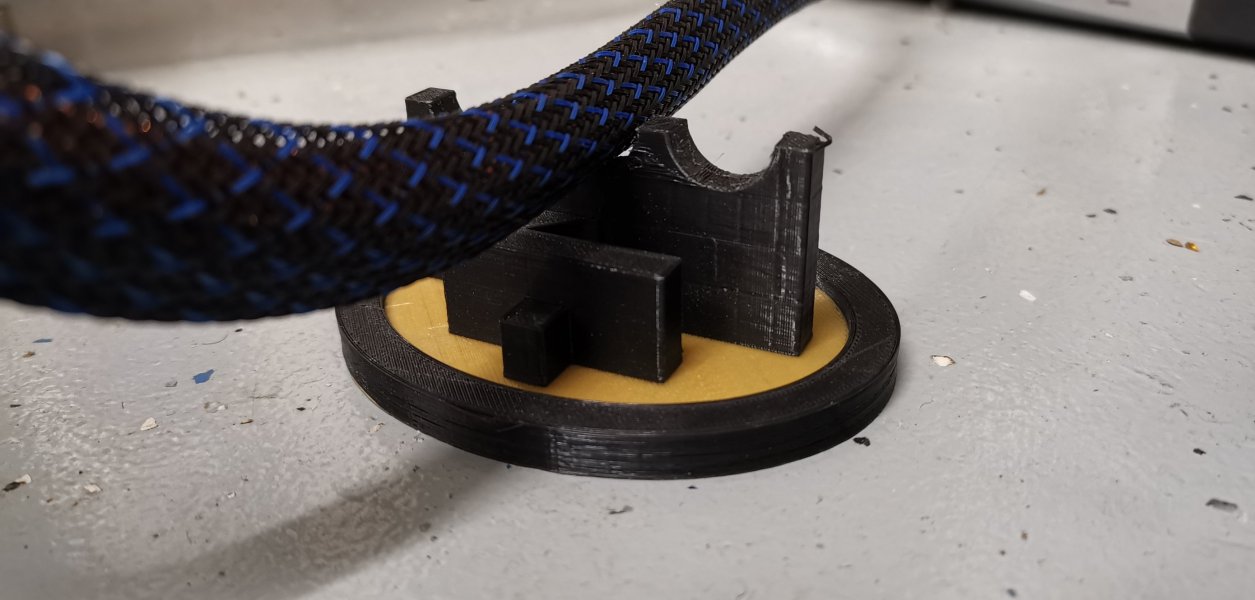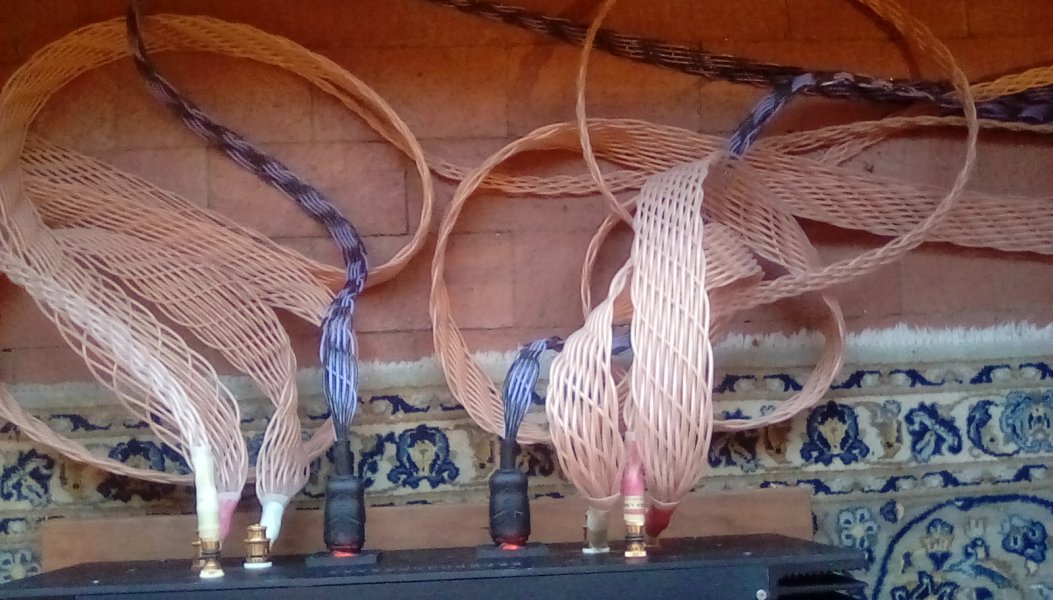The space behind our racks is many times a cluster of wires. Not only do they interact with each other, many times they are hanging and stressing the connection point.
I have mulled ways to mitigate this issues but never acted on it. The best I have done is to try and keep signal cables away from power cables. But I do at times look at the interconnect hanging from my preamp and see the stressed bend occurring from years of hanging.
Has anyone has created an effective way to isolate and support wires. Does anyone have a rack that has an integrated cable management system. Does that system work effectively?
Thanks.
I have mulled ways to mitigate this issues but never acted on it. The best I have done is to try and keep signal cables away from power cables. But I do at times look at the interconnect hanging from my preamp and see the stressed bend occurring from years of hanging.
Has anyone has created an effective way to isolate and support wires. Does anyone have a rack that has an integrated cable management system. Does that system work effectively?
Thanks.



